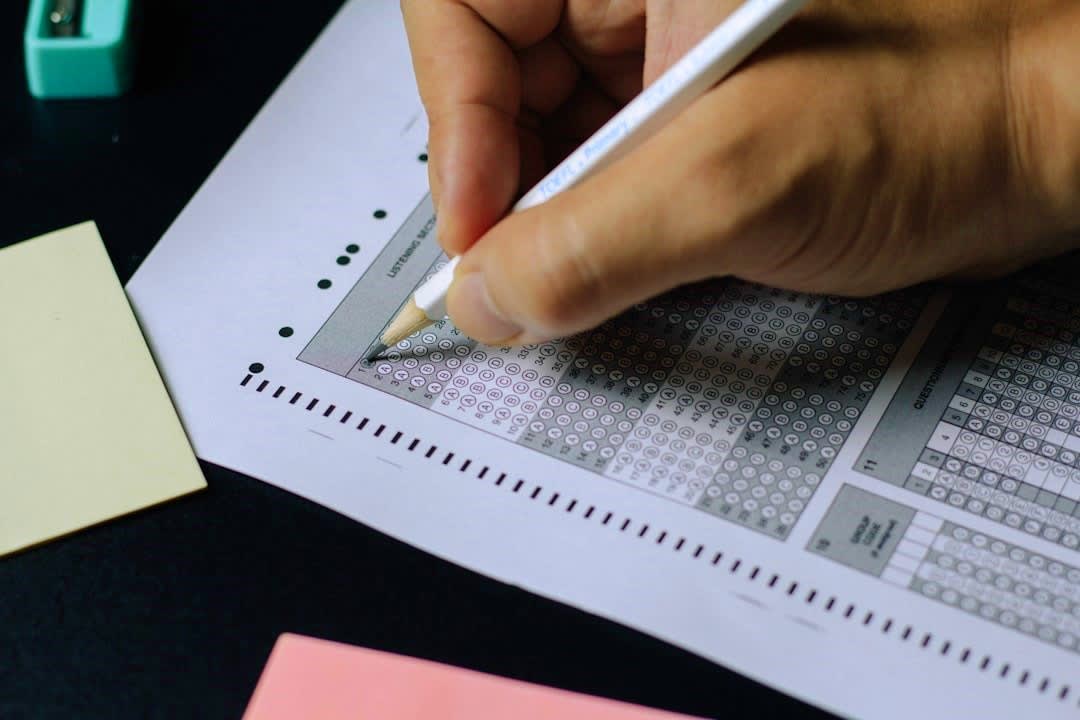The grading enigma
Some grading models try to put square pegs into round holes.
Originally published in the Moultrie News.
My kids’ school has a new policy where every teacher has the same grading percentages (60 percent tests and major grades, 40 percent daily grades and homework), but there have been problems that have really affected the quarterly averages.
This week's writer goes on to explain several valid concerns with the new practice, but the basic problem is this: policies that force square pegs into round holes don’t work.
The round hole here is the prescribed grading percentages. The square peg is the teacher.
Example: If a teacher doesn't give many tests because it doesn't suit their course, it can wildly skew the student's average. A single test or project could count as 60 percent of the quarterly grade. Have one bad day and you're doomed. The teacher’s fix for this is perhaps even worse: start fabricating unnecessary tests and assignments to better fit the prescribed percentage.
That's not how courses should be designed. The tail shouldn’t wag the dog. Percentages should reflect coursework, not the other way around. Teachers shouldn’t make up assignments just to fill an arbitrary matrix.
The logical fix is to square the round hole: let teachers use the percentages that best suit their course. Unfortunately, to paraphrase H.L. Mencken, for every problem, there's a solution that is simple, neat, and wrong, and these are the solutions educational bureaucrats usually embrace.
In this case, their solution is to turn the square pegs round by making every teacher fit the model, and not just as it relates to percentages, but in all areas: they want teachers using the same lessons, same pacing, same assignments, same methods — simple, neat … and wrong.
Because, of course, that’s like saying all artists should paint like Bob Ross. If you’re moved by happy trees, swell, but if not, diversity is your ally. Teaching should not be a paint-by-numbers set.
For example, many teachers, persuaded by experience and research, provide frequent lower-stakes assessments instead of fewer high-stakes tests and projects. A 60/40 percentage model wouldn't work fairly for their students. And if the kids are learning through this method, why not let the teacher cook? As Henry James wrote: “We must grant the artist his subject, his idea, what the French call his donnée; our criticism is applied only to what he makes of it.”
Or let’s put it this way: imagine you and your colleagues had to use the same personal budget: 30 percent on housing, 30 percent on food and utilities, 30 percent on entertainment, and 10 percent on savings and retirement. Immediately, you can foresee problems: What if you live alone versus with a family? That can skew those percentages dramatically. What if you care more about retirement and less about eating out? These percentages wouldn't work. It's sensible to tailor your budget to your family's needs, just like teachers should be able to craft classroom policies that suit their students.
That doesn’t mean uniformity has no place in grading, but legalistic nitpicks like prescribed percentages aren’t it. Instead, educational leaders should focus on broad grading principals that actually help students grow and thrive.
For example, stop allowing students to retake tests they failed or redo answers they missed. Those policies give students no incentive to actually learn the information. Additionally, they lead to grade inflation and make a mockery of students who actually work hard to pass the first time.
Other examples: Require students to submit assignments on time. Encourage activities that are rigorous, minds-on experiences, not dumbed-down, screen-based exercises. Give students the grades they actually earn vs. gifting them 50s when they don’t do any work.
Unlike mandatory grading percentages, these policies might help us exit the current track where only 37 percent of high school seniors reach the reading and math benchmarks necessary for entry-level college courses.
So if it’s percentages we’re worried about, let’s try spending 40 percent less effort tinkering with nonexistent problems while expending 60 percent more energy on the issues actually disintegrating American education.
That would be good for 100 percent of our students.
Jody Stallings has been an award-winning teacher in Charleston since 1992 and is director of the Charleston Teacher Alliance. To submit a question, order his books, or follow him on social media, please visit JodyStallings.com.





It's the "50% in place of a Zero" policy that gets me the most mad.